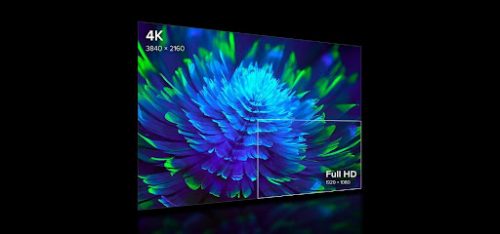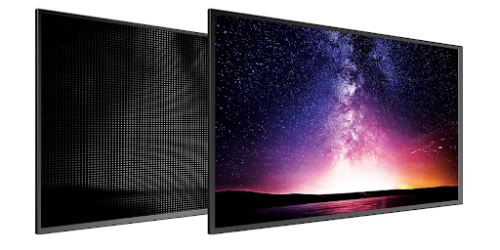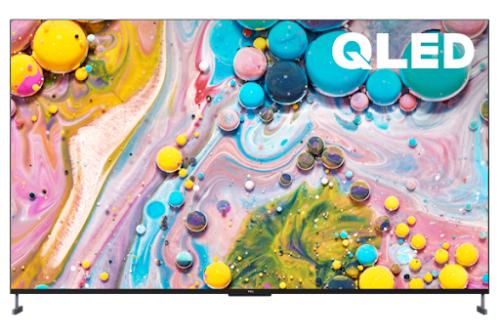With the wide variety of Android TVs out there, it’s easy to get lost among all the technical specifications. 1080, 1440p, 4K, 120Hz, 60Hz — what do all these numbers mean? Well, that’s what we’re going to answer today.
In this article, we talk about all the metrics taken to make up the contents of a technical specifications sheet. For example, we take a look at what different screen resolutions read like, what refresh rate is, and finally, what a 4K 120Hz TV is. In the end, we will tell you whether a 120Hz TV is better than a 60Hz TV. Let’s get started.

What Do 4K and 120Hz Stand For?
Simply put, 4K is a representation of screen resolution while 120Hz is a representation of screen refresh rate. To help you understand what both are, let’s define them one by one.
-
Screen resolution
Screen resolution is the measure of the clarity of your TV’s display. That means the higher the resolution, the better the clarity of your display. There are many standard resolutions that you may have seen around. There’s 720p, 1080p, 1440p, and finally, there’s 4K. You may be wondering why the first 3 resolutions are measured in a number followed by “p,” but the last one is represented by a single-digit number followed by “K.” Well, let us clear things out.
720p means the number of pixels on the smaller side of the display is 720. However, the number of pixels on the larger side is often substantially higher. The screen resolution of a 720p display is usually 1280 x 720. While talking about TVs, 1280 represents the number of pixels laid out horizontally on display, while 720p represents the number of pixels laid out on the vertical axis. To get the full pixel count ondisplay, you can multiply the number of horizontal pixels by the number of vertical pixels.
On the other hand, screen resolutions with the “K” suffix represent the horizontal pixel count, no matter the vertical number. In physics, K means 1,000 — so 4K means 4,000. As a result, a 4K display has a horizontal pixel count of (almost) 4,000. At the same time, the number of vertical pixels could be lower just because TVs are wider horizontally than they are tall vertically.
3840 x 2160 is the most common screen resolution of 4K TVs. It’s important to note that the “K” represents a rough estimate. 4K does not mean that the horizontal pixel count is exactly 4,000, but a rough estimate. For example, in the 3840 x 2160 screen solution, 3840 represents the horizontal pixel count. But as you can see, it’s not exactly 4000, and it’s 160 pixels lower than that number. A 4K TV’s resolution can also be written as 2160p. If we use the same analogy that we used to label 720p, 1080p, and 1440p displays, a 4K display can be called 2160p.
-
Refresh rate
To understand the refresh rate on a 4K 120Hz TV, you need to understand how displays work.
When you’re watching a video or movie on display, it’s actually a lot of images being switched really fast. When the display changes images with that speed, you perceive that the person or thing in the video is moving. The number of times an image is changed on display is called Frames Per Second. Videos are usually played on 23FPS, 30FPS, or 60FPS. However, most games actually don’t have an FPS limit and go as high as the display supports.
To show a certain number of frames per second on display, it must support that refresh rate. That means if you want to see a 60FPS video, your display must support a 60Hz or higher refresh rate. The higher the refresh rate, the smoother the content you can view on display. And Hz, the short form of Hertz, is a unit used to measure refresh rate. A 60Hz display can let you view the content of up to 60 frames per second, while a 120Hz TV can let you view the content of up to 120 frames per second.

4K 60Hz TV VS. 4K 120Hz TV
Now that you’re aware of all the technical aspects of the subject, you can easily tell that a 4K 120Hz TV is a better option than a 4K 60Hz TV. Let’s compare the specs of both options side-by-side to find out which is better.
1. Screen resolution is the same on both.
As both the options have a “4K” resolution, that means there’s no difference in the clarity between the two. For a 4K 120Hz TV and a 4K 60Hz TV — both will be crystal clear to look at as they have the same resolution of 3840 x 2160. But that’s where the similarities end.
2. The refresh rate is what sets them apart.
As you’re aware of what 60Hz and 120Hz mean, now you know that a 120Hz panel is going to be much smoother to look at. All the animations you see on the screen will be played at 120 frames per second, meaning they all will be silky smooth. Furthermore, if you play games or watch high FPS (120+) videos, your 120Hz TV will be able to support them just fine.
On the other hand, if you get a 60Hz TV, you will only see 60 frames per second in videos, games, and animations. Hence, getting a 4K 120Hz TV means you can consume smoother content without a problem.

TCL 4K 120HZ TV
TCL is one of the biggest names in the 4K TV industry. When you’re in the market looking for the best 4K 120Hz TV you can find, TCL is the way to go. TCL has tons of other TV options, but a 4K 120Hz TV should be the top pick for everyone.
TCL 4K 120HZ TV (C735 series) can greatly meet your home entertainment needs because of its 98-inch screen, excellent 4K resolution, Dolby Vision IQ, Full Array, and IMAX Enhanced. In addition, the 4K 120HZ TV provides immersive 3D sound effects, bringing you the ultimate experience.
With the high resolution and smooth refresh rate, you can consume media, play games, and enjoy the UX of your Android 4K 120Hz TV in a way like never before. You are welcome to contact TCL for more information about its compelling 4K 120Hz TV.
Interesting Related Article: “5 Factors to Consider when Purchasing a TV“

